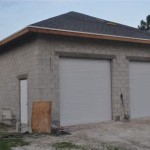Adding A Garage To Your House
Adding a garage to your house can be a significant investment but can also provide numerous benefits. It provides a safe and secure space for your vehicles, storage, and even hobbies. However, the process of adding a garage involves careful planning, obtaining necessary permissions, and coordinating with contractors. This article will provide a comprehensive guide for homeowners considering adding a garage to their property.
Planning and Design
The first step in adding a garage is careful planning and design. This involves considering the size, style, and functionality of the garage. The size of the garage should accommodate your needs, including the number of vehicles, storage space, and any other intended uses. Consider the style of the garage to blend seamlessly with the existing architecture of your house. For example, if your house is traditional, a garage with a gable roof and brick facade would be a suitable choice. Functionality is crucial, so decide on features such as overhead doors, windows, and electrical outlets.
It is also important to consider the location of the garage. The garage should be easily accessible from your property and ideally situated to minimize noise and disturbance to your neighbors. Additionally, consider the impact on your yard and landscaping, as the addition of a garage can alter the overall aesthetic.
Permits and Approvals
Before construction begins, you will need to obtain the necessary permits and approvals from your local municipality. Building codes and regulations vary from place to place, so contacting your local building department is crucial. They can provide information on required permits, zoning restrictions, and any other relevant guidelines. You may also need approval from your homeowners association (HOA) if applicable. Obtaining the necessary permissions ensures that your garage construction complies with local regulations and avoids potential legal issues in the future.
Construction and Costs
The construction of your garage will involve various stages, including site preparation, foundation construction, framing, roofing, siding, and finishing. The cost of adding a garage can vary significantly depending on factors such as size, materials, labor, and location. It is essential to obtain multiple quotes from reputable contractors and compare their bids. Factor in any additional costs, such as landscaping, driveway extension, and electrical work. A detailed breakdown of the estimated costs will help you create a budget and plan for the project.
During the construction process, ensure that the contractors adhere to building codes and regulations and use high-quality materials. Consider using energy-efficient materials and appliances for your garage, such as insulated doors and windows, to reduce energy consumption and save on utility costs.
Adding a garage to your house can be a rewarding project that enhances the functionality and value of your property. By carefully planning, obtaining necessary permits, and working with reputable contractors, you can achieve your desired garage addition while meeting local regulations and ensuring a successful outcome.

How To Add A Garage Addition Ideas

Home Additions 8 Ways To Add Livable Space Your

What To Consider Before Planning A Garage Addition T G Builders

3 Things You Need To Know When Planning A Garage Addition

Will Building A Detached Garage Increase Your Home S Value Coastal Steel Structures

5 Things To Consider When Adding A Detached Garage Your Home Danley S Garages

Is Adding A Garage Good Idea

10 Garage Upgrades For Your Home Balm

Add A Two Car Garage To Your Home Talon Construction

Do Garages Really Add Value To Your Home Popowich Company
Related Posts








